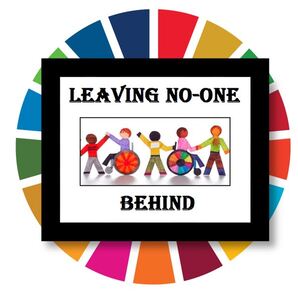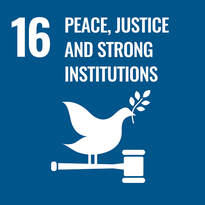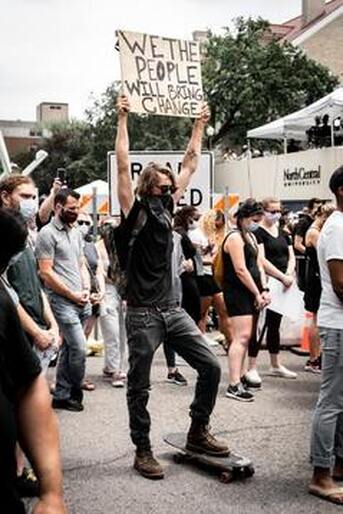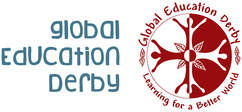Big Idea
The idea is to envision a positive future, where solutions to enable SDG Peace, Justice and Strong Institutions become feasible - so that conflict, insecurity and limited access to justice can be dealt with.
The marginalisation of Roma people is suggested as a starting point, to explore roots of tension and prejudice in society and explore ideas for peaceful means to overcome conflict and develop a fair, just society.
The marginalisation of Roma people is suggested as a starting point, to explore roots of tension and prejudice in society and explore ideas for peaceful means to overcome conflict and develop a fair, just society.
Type of Activity:
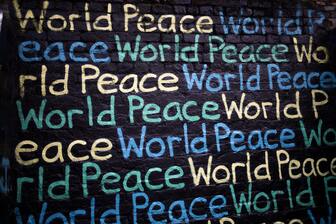 Photo by Humphrey Muleba
(via Unsplash)
Photo by Humphrey Muleba
(via Unsplash)
It is the lesson where students use critical thinking and critical media literacy to speak about their own experience in this field.
The activity relies on communication, exploring out-of-the box ideas and awareness raising about the importance of peace education and using the principles of non-violence in looking for solutions to the problem.
The activity relies on communication, exploring out-of-the box ideas and awareness raising about the importance of peace education and using the principles of non-violence in looking for solutions to the problem.
Who is it for?
Age 11 to 18.
What do I need?
Computer with access to internet, The Plight of the Roma People in Europe video clip or news clip, articles or photos in current news connected with SDG 16.
How long does it take?
2 x 45 minutes.
Introduction
Use an article or film clip about Roma people (alternatively, an article about a war situation in some countries or about Covid restrictions or about politics in a country such as Slovenia.) How would it feel to be in the shoes of the different people in this situation? What emotions might they feel? Where might bad feelings and misunderstandings lead?
As young people, they can say openly what they don't consider to be right in the society. Students talk about Roma. They critically debate about the stereotypes about Roma, how they are viewed by majority population and how they used to be called in the past. They may relate to their personal experiences with Roma people. Further, they can discuss whether it is time for a peace race, instead of an arms race.
What about you? Encourage students to discuss if they are happy with the lives they live and what challenges they find in their surroundings. Ask them if they resolve their situations in non-violent way or if they sometimes use violent ways (this can mean also verbal violence).
As young people, they can say openly what they don't consider to be right in the society. Students talk about Roma. They critically debate about the stereotypes about Roma, how they are viewed by majority population and how they used to be called in the past. They may relate to their personal experiences with Roma people. Further, they can discuss whether it is time for a peace race, instead of an arms race.
What about you? Encourage students to discuss if they are happy with the lives they live and what challenges they find in their surroundings. Ask them if they resolve their situations in non-violent way or if they sometimes use violent ways (this can mean also verbal violence).
What next
Introduce students to SDG 16, using the explainer video (below). Discuss examples shared and contrast experiences of students with what it is written under SDG 16. Tell them that opinion polls suggest that a great percentage of people in Slovenia have very low trust in government institutions. Why is this? Is it the same in other countries?
Support students to voice ideas on how we could build trust in Peace, Justice and Strong Institutions. These can be out-of-box ideas about how states should be run, how justice is made accessible to vulnerable groups and how conflicts can be resolved via peaceful means.
Encourage students to have vision for the future of their country and to envision themselves in ten or twenty years from now. What would they like their lives to be like? In groups, they can imagine one new country (with a new coat of arms, a new flag, etc) and they can imagine all the attributes needed, in order to function better and with better results - so that no one is left behind.
Finally
Students reflect on what they have said about SDG 16 and share their ideas for what their new country would be like and how changes can be achieved. What will be the values and priorities for this country?
They can find information about Human Rights Ombudsman and how they can voice their concerns or ideas to him/her.
Students can voice their opinions - if everyone deserves to be free from war and other forms of violence, for example. They review all important topics of SDG 16 and evaluate both students and teacher's participation.
A teacher can reflect on what she/he does to support the success of Peace, Justice and Strong Institutions.
They can find information about Human Rights Ombudsman and how they can voice their concerns or ideas to him/her.
Students can voice their opinions - if everyone deserves to be free from war and other forms of violence, for example. They review all important topics of SDG 16 and evaluate both students and teacher's participation.
A teacher can reflect on what she/he does to support the success of Peace, Justice and Strong Institutions.
Find out more
Further lesson resources on Non-violent Action for Change -
https://www.decsy.org.uk/projects/non-violent-action-a-force-for-change-lesson-plans/
https://www.decsy.org.uk/projects/non-violent-action-a-force-for-change-lesson-plans/
